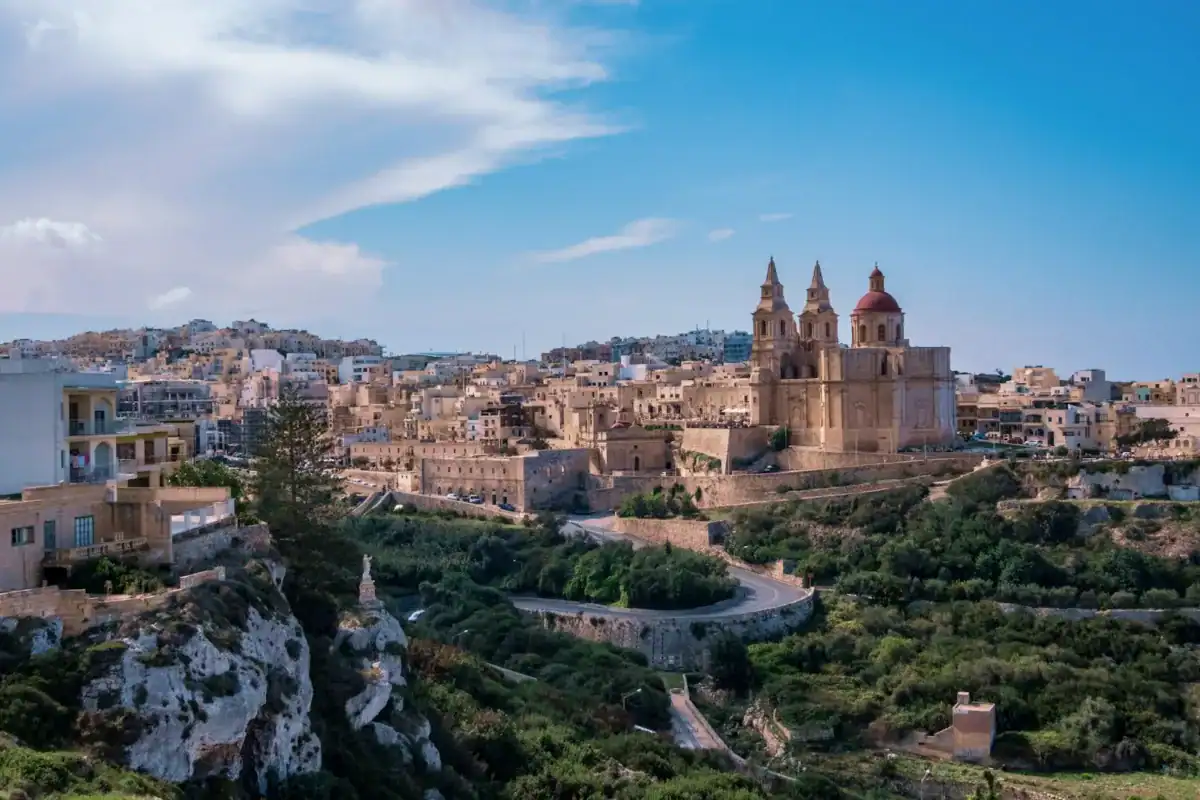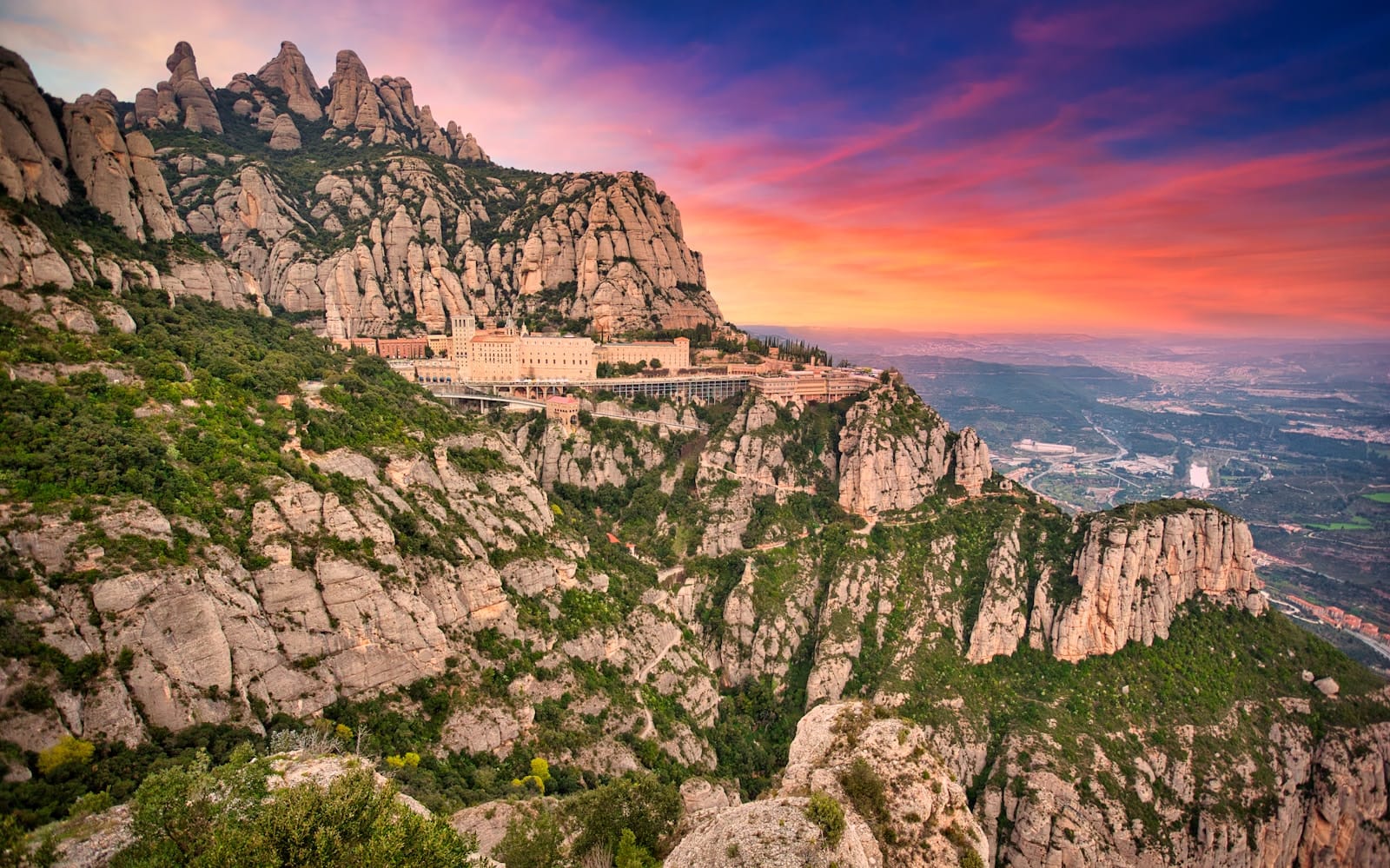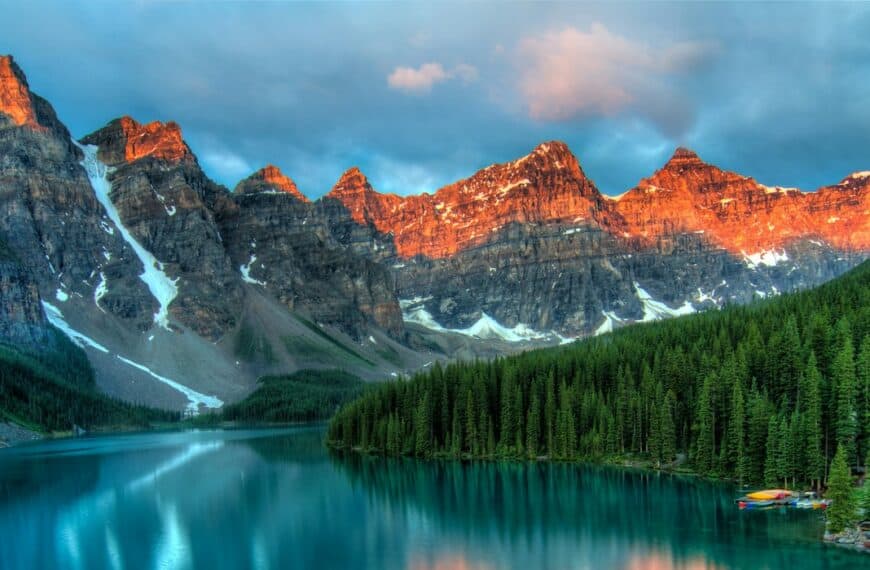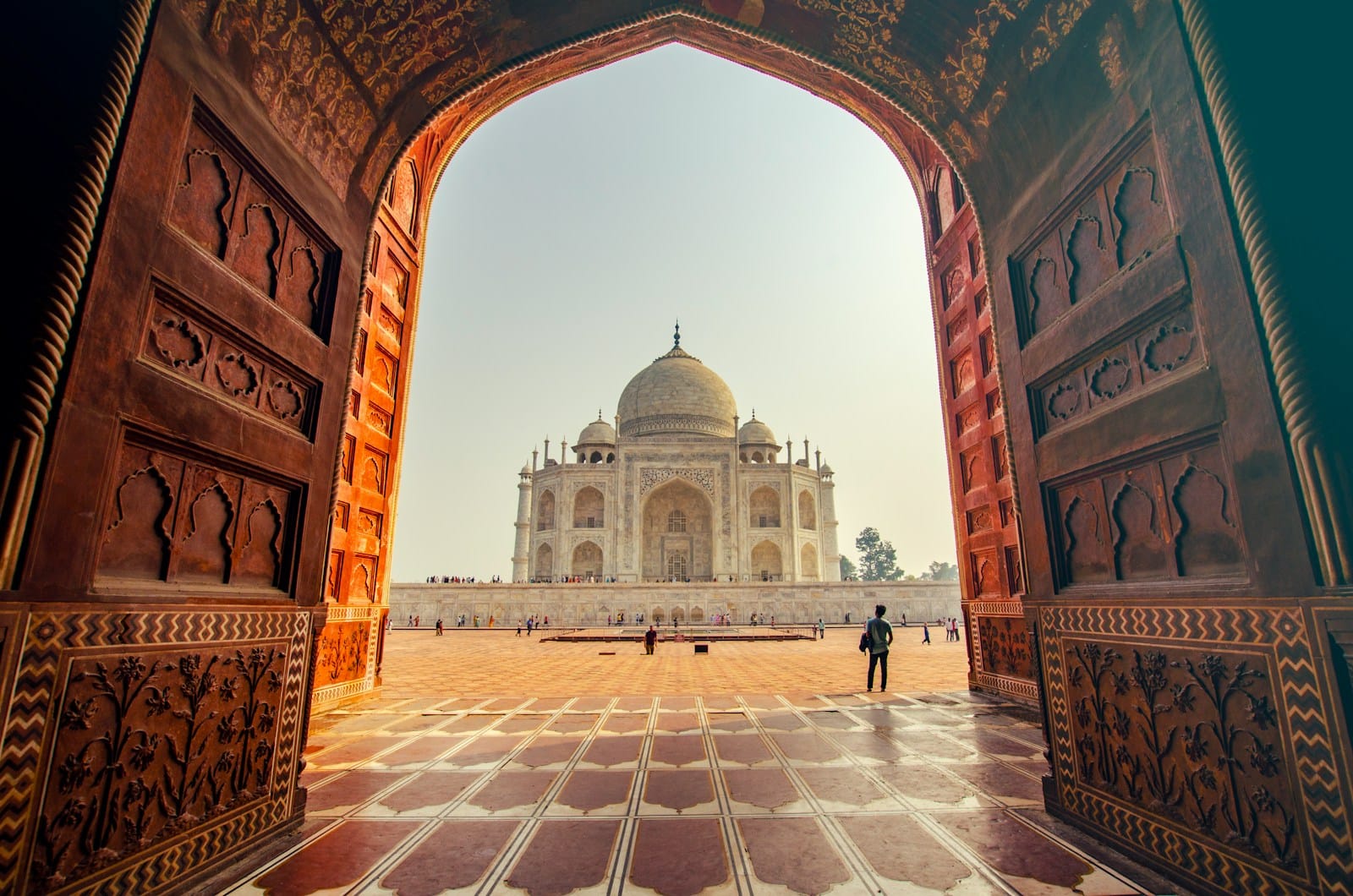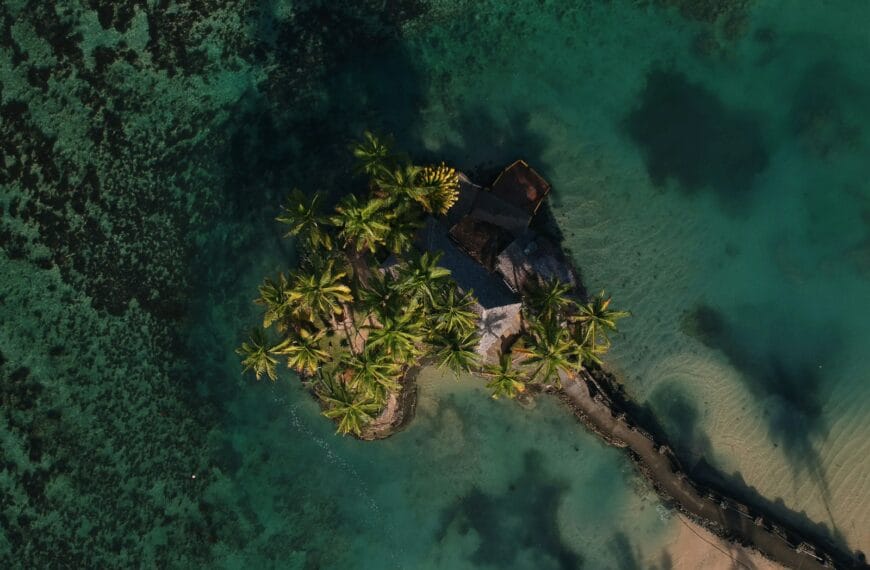Malta Travel Guide: Islands of History, Sun & Sea
Intro to Malta Travel Guide
Set between Sicily and North Africa, Malta is a small archipelago with a massive story. Ancient temples older than the pyramids meet Baroque fortresses, blue bays, and limestone villages that glow at golden hour.
This Malta Travel Guide blends practical planning with insider context so you can connect the islands’ culture, coastlines, and cuisine. You’ll move easily between Valletta’s palaces, Gozo’s countryside, and Comino’s luminous lagoons.
Start planning with curated Malta tours that help you see more — from fortress walks and temple visits to harbor cruises and coastal hikes — and use this Malta Travel Guide as your step‑by‑step map to the islands.
Where to Go in Malta
Gozo | Marsaxlokk | Mdina | Mellieħa | Rabat | Sliema | St. Julian’s | Valletta | Victoria | Żebbuġ
💡Quick Facts:
Destination: Malta
Continent: Europe
Country: Malta
Administrative Division: N/A (unitary state)
City: Valletta (capital)
Area: 316 km² (122 mi²)
Population: ~520,000
Density: ~1,645/km²
Capital: Valletta
Regions/Subregions: Northern, Northern Harbour, Southern Harbour, South Eastern, Western, Gozo and Comino
Official & Regional Languages: Maltese (official), English (official), Italian widely understood
Currency: Euro (EUR, €)
Time Zone(s): Central European Time (CET, UTC+1), Central European Summer Time (CEST, UTC+2)
Airports: Malta International Airport (MLA) — Luqa
Climate: Mediterranean — hot, dry summers; mild, wetter winters
Known For: Megalithic temples, medieval cities, diving sites, Blue Lagoon, historical ties to the Knights of St. John
🛂Arrival Info:
Entry Requirements: EU/EEA and Swiss citizens may enter with ID card or passport; other nationalities follow Schengen entry rules.
Visa-Free Countries: Most EU, Schengen, and selected countries (e.g., USA, Canada, Australia, Japan) for short stays up to 90 days.
Visa-on-Arrival: Not available; Schengen visa required for applicable nationalities.
Maximum Tourist Stay: 90 days within 180-day period (Schengen rules).
Electronic Travel Authorizations: Not applicable.
Official Visa Info: Government of Malta – Identity Malta
Customs Info: Malta Customs
💉Health Info:
Vaccines: Routine vaccinations recommended; no special vaccines required.
Local Outbreaks: No regular recurring outbreaks.
Hospitals: Mater Dei Hospital (Msida) is the main facility; high standards and English-speaking staff.
Traveler Clinics: Private clinics available in main towns; Gozo General Hospital serves Gozo and Comino.
Terrain Risks: Summer heat and UV exposure.
Travel Insurance: Strongly recommended; emergency medical care is available but can be costly for non-EU visitors.
✅ Check travel insurance options for travel emergencies, delays, and medical needs abroad — Get coverage here
✅ Stay Informed with Official Updates: WHO – International Travel & Health | CDC – Travel health updates
🚨Travel Advisory:
Current Alerts: Stable and safe; minor petty theft in tourist hotspots.
Safety Level: Very low crime rate.
Local Risks: Pickpocketing in busy markets or public transport during peak tourist season.
✅ Stay Informed with Official Updates: US Travel Advisory | UK Foreign Travel Advice
📅Holidays:
Feast of St. Paul’s Shipwreck: February 10 — Religious celebrations in Valletta.
Freedom Day: March 31 — Marks British military departure in 1979.
Republic Day: December 13 — Commemorates Malta becoming a republic in 1974.
Victory Day: September 8 — Marks end of Great Siege of 1565 and Italian surrender in WWII.
💰Visitor Info:
Currency: Euro (€).
Exchange: ATMs widely available; currency exchange at banks and major hotels.
Cards: Widely accepted; contactless common.
Tipping: 5–10% in restaurants if service not included.
Duty-Free: EU rules apply; duty-free available for non-EU travelers at MLA.
Average Daily Budget: Budget €60–100, Midrange €120–200, Luxury €300+
✈️Airports:
Main Airport: Malta International Airport (MLA), Luqa — 8 km from Valletta.
Transport: Bus, taxi, and ride-hailing services available; no rail system.
✅ Delayed or canceled flight? Check if you’re eligible for compensation
🚍Transport:
Local: Extensive bus network connects main towns and tourist sites.
Ride-Hailing: Bolt and eCabs available.
Intercity: Ferries connect Malta to Gozo and Comino; international ferries to Sicily.
Driving: Right-hand driving; IDP recommended for non-EU licenses.
Parking: Limited in historic centers; park-and-ride facilities available.
✅ Book reliable airport transfers and in-city rides in advance. Reserve your ride here
📶Connectivity:
SIM/eSIM: Available at the airport and in towns (GO, Epic, Melita).
Coverage: Excellent 4G/5G nationwide.
Wi-Fi: Free in many cafes, hotels, and public areas.
Roaming: EU roaming rules apply for EU SIM holders.
✅ Stay connected abroad with affordable eSIM data packs. Get your eSIM here
📜Laws & Etiquette:
Drinking Age: 17 for alcohol purchase.
Dress Code: Casual, but modest clothing recommended in churches.
LGBTQ+: Legal and widely accepted.
Behavior: Respect religious sites; avoid loud behavior late at night in residential areas.
🛡️Emergency Info:
Emergency: 112 (all services).
Tourist Assistance: Police stations in major towns; English widely spoken.
Embassies: Many countries have embassies in Valletta or nearby Ta’ Xbiex.
✅ Use embassy locator tools: Embassies Worldwide
🌦️Weather:
Summer: Avg. highs 30–33°C, dry and sunny.
Winter: Avg. highs 15–17°C, mild with occasional rain.
Best Time: April–June and September–October — warm weather, fewer crowds.
✅ Stay prepared—check the weather forecast for your destination — Weather Forecast
Malta by Region – Where to Go
Each island and district offers a distinct rhythm. Use this section to decide where to base, what to day-trip, and how to link coast, culture, and countryside without backtracking.
Valletta & Floriana
A UNESCO-listed walled capital filled with grand Auberges, ornate churches, and sea-view gardens. Floriana wraps the city with bastions and leafy avenues, adding calm promenades to the capital’s density.
- Valletta – Malta’s cultural heart, with narrow streets, golden façades, and views over the Grand Harbour.
- Floriana – Leafy gateway to the capital, known for gardens and historic military architecture.
- St. John’s Co-Cathedral – Lavish Baroque interiors and Caravaggio’s dramatic masterpiece.
- Upper & Lower Barrakka Gardens – Scenic terraces framing the Saluting Battery and harbor.
- Grand Harbour waterfront – A lively quay with cafés, ferries, and marina views.
The Three Cities (Birgu/Vittoriosa, Senglea/Isla, Cospicua/Bormla)
Across the Grand Harbour from Valletta, these fortified peninsulas preserve Malta’s maritime soul. Expect tight lanes, stone watchtowers, yacht marinas, and intimate museums.
- Birgu (Vittoriosa) – Rich in maritime history and charming waterfront restaurants.
- Senglea (Isla) – Offers one of the best panoramic views of Valletta from its Gardjola Gardens.
- Cospicua (Bormla) – A working harbor town with centuries-old churches and shipyard heritage.
- Inquisitor’s Palace – A rare surviving seat of the Inquisition in Europe.
- Fort St. Angelo – A commanding fortress guarding the harbor entrance.
Central & Western Malta (Mdina, Rabat, Dingli, Mosta, Naxxar)
Medieval Mdina, the “Silent City,” crowns the region with honey-stone palaces and panoramic bastions. Rabat holds catacombs and Roman remains, while Dingli Cliffs deliver rugged coastal views.
- Mdina – A quiet walled city where time seems to stand still.
- Rabat – Known for catacombs, Roman mosaics, and casual local cafés.
- Dingli Cliffs – Sheer coastal escarpments with spectacular sunsets.
- Buskett Gardens – Woodland once used as a hunting ground for the Knights.
- Mosta Dome (Rotunda) – Famous for its massive unsupported dome and wartime miracle story.
Northern Malta (Mellieħa, St. Paul’s Bay, Buġibba, Qawra)
A beach-first zone with long sandy bays and access to ferries for Gozo and Comino. Coastal promenades and reefy headlands suit swimmers, families, and sunset chasers.
- Mellieħa Bay (Għadira) – The island’s longest sandy beach, ideal for families.
- Golden Bay – Popular for its sunsets and beachside dining.
- Għajn Tuffieħa – A quieter bay accessed by a scenic staircase.
- St. Paul’s Bay – Bustling seaside town with fishing and diving options.
- Il-Majjistral Nature & History Park – Coastal reserve with trails and historical remains.
Southern Malta (Marsaxlokk, Żurrieq, Blue Grotto)
Fishermen’s colors, sea caves, and prehistoric stones. Markets bustle in Marsaxlokk; boats glide into the Blue Grotto; megaliths keep watch over wave-carved cliffs.
- Marsaxlokk – Famous for its Sunday fish market and colorful luzzu boats.
- Blue Grotto (Wied iż-Żurrieq) – Sea caves glowing with reflected light.
- Ħaġar Qim – Megalithic temple complex with sea views.
- Mnajdra – Solstice-aligned prehistoric temples near the coast.
- Marsaskala promenade – Relaxed seafront walkway lined with cafés.
Gozo (Victoria/Rabat, Xagħra, Xlendi, Marsalforn)
Greener, slower, and subtly different in dialect and traditions. Hill towns, farmhouses, red-sand beaches, and karst coastlines define Malta’s rural twin.
- Victoria (Rabat) & the Citadel – Hilltop fort offering panoramic views of Gozo.
- Ġgantija Temples (Xagħra) – Monumental prehistoric structures older than the pyramids.
- Ramla Bay – Wide, red-sand beach with shallow waters.
- Xlendi Bay – Small bay with seafood restaurants and cliffside walks.
- Dwejra Bay & Inland Sea – Karst coast with a sheltered lagoon and dramatic sea arches.
Comino & the Islets
Tiny and mostly undeveloped, Comino offers translucent shallows and hiking paths scented with thyme and sea spray. Day-trippers come for the light; linger to find quiet coves.
- Cominotto islet – Rocky outcrop with natural swim spots.
- Blue Lagoon – Shallow turquoise waters between Comino and Cominotto.
- Santa Marija Bay – Secluded beach with calm swimming.
- Crystal Lagoon – Deep bay ideal for snorkeling and diving.
Top Places to Visit in Malta
This section spotlights the essential places to visit in Malta — grouped by feel — so you can mix history with swims, viewpoints, and village life without rushing.
Cultural Capitals
Valletta
A compact capital of Baroque façades, knightly auberges, and vaulted interiors. Inside St. John’s Co-Cathedral, Caravaggio’s dramatic masterpiece commands the altar. From the Barrakka Gardens, watch the Saluting Battery fire across the Grand Harbour — a stirring start to any visit.
The Three Cities
Birgu, Senglea, and Cospicua preserve centuries of maritime heritage. Stroll Fort St. Angelo’s ramparts, wander lanes with colorful wooden balconies, and pause at the marina for sunset drinks. These harborside towns combine history, museums, and waterside promenades in a walkable setting.
Mdina & Rabat
Mdina’s lantern-lit alleys exude medieval calm, while Rabat’s catacombs and Roman ruins reveal the islands’ early Christian story. Cafés tucked into stone courtyards invite slow afternoons — proof that Malta’s charm lies as much in lingering as sightseeing.
Nature & Coast
Dingli Cliffs
Sheer limestone walls tumble into cobalt waters as kestrels glide on thermal currents. The cliff-edge paths near San Lawrenz Chapel are best at sunset, when the horizon glows and the sea darkens to indigo.
Golden Bay & Għajn Tuffieħa
Two sandy bays divided by a rugged headland. Spend the afternoon swimming, follow the cliff trail for sweeping views, and stay for a sunset that bathes the sand in bronze and rose before dining barefoot by the shore.
Il-Majjistral Nature & History Park
A protected corner of the northwest, rich with spring wildflowers and secluded summer coves. Trails wind between limestone outcrops and offer unobstructed views of the Mediterranean.
Islands & Lagoons
Ramla Bay, Gozo
A wide stretch of reddish sand backed by low dunes. Snorkel the rocky edges, then head inland to explore Xagħra’s Ġgantija Temples, adding a layer of deep history to a day on the coast.
Dwejra Bay & Inland Sea, Gozo
Karst cliffs, sea caves, and a sheltered lagoon connected to the open water by a natural rock tunnel. Small boat trips through the archways reveal hidden grottoes and dramatic coastal views.
Blue Lagoon, Comino
A shallow channel of turquoise water between Comino and Cominotto. Visit early or late to avoid crowds, wander to nearby coves for solitude, and don’t forget reef-safe sunscreen.
Ancient Stones
Ħaġar Qim & Mnajdra
Prehistoric temples aligned with the solstices, standing above a wave-carved coastline. The soft light of morning brings out the texture of the megaliths, while on-site exhibits explain their significance.
Ġgantija, Gozo
The “Giants’ Tower” predates Stonehenge and the Great Pyramids. Its colossal limestone blocks and commanding setting make it one of the archipelago’s most awe-inspiring ancient sites.
Harbors & Views
Upper Barrakka & Saluting Battery
Daily cannon fire across one of the world’s great natural harbors. Ride the lift down to the Valletta waterfront for cafés and boat links to the Three Cities — a simple, scenic bit of Malta tours logistics.
St. Paul’s Bay Promenade
Long sea views, lidos for easy swims, and family‑friendly evening strolls. This is where everyday island life rolls by.
Suggestions:
- Spend the day in Valletta with a guided cathedral tour, an auberge history walk, and a Grand Harbour cruise — a trio that ties together art, architecture, and seafaring heritage.
- Combine Mdina and Dingli for a sunset itinerary, then finish with a late dinner in Rabat’s courtyards for a night of stone, sky, and authentic Maltese flavors.
- Explore Gozo with stops at Ġgantija, Ramla Bay, and the Xlendi cliffs before toasting the day at a farmhouse restaurant, blending culture and coast.
Book immersive Malta tours and experience unforgettable things to do in Malta — from prehistoric temple walks and Blue Lagoon swims to Valletta harbor cruises and cliff-top hikes at Dingli.
How to Choose Where to Go in Malta
- Use your goals to shape the map. This Malta Travel Guide keeps transfers short so you see more and sit in traffic less.
- If you want beach days with easy services, base in the north around Mellieħa, St. Paul’s Bay, or Qawra. You’ll be close to ferries, sandy bays, and Malta tours to Comino. Culture‑first visitors should stay in Valletta or Birgu for walkable museums, churches, and harbor views.
- If you’re craving village life and hikes, spend two or three nights on Gozo. The slower pace, farm‑to‑table restaurants, and cliff paths add depth to things to do in Malta. Add a day in the south for places to visit in Malta built around megalithic temples, the Blue Grotto, and Marsaxlokk’s market.
- Mix it smart: one urban day (Valletta + Three Cities), one coast day (Golden Bay + Dingli), one boat day (Blue Lagoon), and one Gozo day (Ġgantija + Ramla). That balance fits most trips and keeps travel cost in Malta predictable by clustering sights.
How to Get Around Malta
- Public buses knit the islands together and radiate from Valletta’s terminal. They’re affordable, frequent on main corridors, and the best value for travel cost in Malta. Expect slower runs on rural routes and peak‑hour crowds around resort zones.
- Harbor ferries link Valletta to Sliema and to the Three Cities — faster and more scenic than buses. The Ċirkewwa–Mġarr ferry connects Malta and Gozo day and night; foot passengers simply walk on and pay onboard, keeping travel cost in Malta straightforward.
- Driving is on the left. Car rentals are handy if you plan far‑flung viewpoints or late dinners on Gozo, but parking can be tight in historic cores. Many travelers pair buses by day with Malta tours in the evening to streamline logistics.
- Taxis and ride‑hailing apps cover short hops, especially after late shows or markets. In summer, consider boat shuttles around Comino’s coves; they’re efficient for things to do in Malta that involve swimming spots. Download offline maps and the official transport app to steady your schedule and manage travel cost in Malta.
Travel Budget and Costs in Malta
The cost to travel in Malta stays reasonable compared to much of Western Europe, especially if you use buses, eat local, and book ahead in summer.
- Budget travelers can target €50–€80 per day. Choose guesthouses or hostels, bakery lunches, and buses. Multi‑stop Malta tours occasionally add value versus piecing transport together, keeping travel cost in Malta predictable.
- Mid‑range trips run €120–€200 per day. Boutique hotels in Valletta or St. Paul’s Bay, sit‑down dinners, and a few guided experiences like temple walks and harbor cruises. This band suits most readers of a Malta Travel Guide.
- Luxury starts around €250+ per day. Five‑star hotels, private skippers to Comino, winery lunches on Gozo, and chauffeured transfers. Pre‑booking smooths demand spikes around summer and festivals.
Sample prices to benchmark the cost to travel in Malta:
- Bus rides: €2–€2.50 (seasonal)
- Valletta–Three Cities ferry: ~€2
- Malta–Gozo foot ferry (return): ~€5
- Casual meals: €8–€15
- Mid-range dinners: €25–€40
- Museum entries: €5–€15
Snacks like pastizzi keep travel cost in Malta friendly, while guided bundles can reduce the cost to travel in Malta if they replace multiple taxis.
Best Time to Visit Malta
Seasonality shapes swims, crowds, and festival calendars. Use this 4‑season overview to align weather with your priorities and manage travel cost in Malta.
Spring (March–June)
This is often the best time to visit Malta. Days warm quickly, wildflowers lace Il‑Majjistral, and seas begin to invite brave swimmers by May. Valletta’s streets feel lively without being overwhelmed. Hiking on Gozo is ideal before peak heat, and temple sites are quieter. Easter brings processions and village traditions; book early if your Malta tours target holiday weekends. With shoulder‑season rates, the cost to travel in Malta stays favorable.
Summer (July–August)
High season delivers hot days, warm seas, and long light for cliff walks and sunset swims. It’s a prime window for boat‑based things to do in Malta like Comino’s Blue Lagoon, so arrive early or sail late. Village festas — fireworks, band marches, lights — fill the calendar, an emotional highlight of many Malta tours. Rates rise; reserve rooms and boats in advance. If you’re flexible, a Valletta city stay plus beach day‑trips can balance comfort and the cost to travel in Malta.
Autumn (September–October)
Many locals call this the best time to visit Malta for swimming. Seas are at their warmest, days soften, and crowds thin. Vintage regattas and harbor events animate the waterfronts, while Gozo’s countryside begins to green. This is a sweet spot for Malta tours that blend snorkeling with temple visits. Prices start easing, making travel cost in Malta attractive again.
Winter (November–February)
Mild and uncrowded. Rain arrives in pulses that freshen the cliffs and fields. Valletta’s museums, cafés, and opera programs shine; Mdina’s alleys turn cinematic under winter light. For culture‑first visitors, this can be the best time to visit Malta, with lower travel cost in Malta and space to linger in churches and galleries. Pack a light jacket, plan indoor backups, and savor kitchens leaning into stews and baked pastas.
Takeaway: The best time to visit Malta depends on your focus. Spring for hiking and balanced crowds; summer for lagoon life and festas; autumn for warm seas; winter for value and culture. Match Malta tours to the season — boats and beaches in warm months, galleries and temples year‑round — and your Malta Travel Guide plan will hum.
Must‑See Experiences in Malta
Curate a handful of anchor moments, then let side streets, coves, and cafés surprise you. These highlights weave classic things to do in Malta with local texture.
- Grand Harbour Triad: Barrakka cannon salute, panoramic ferry to the Three Cities, marina aperitivo at Birgu. A perfect half‑day arc of views, boats, and bastions.
- Temple Dawn: Early entry at Ħaġar Qim and Mnajdra when light rakes across megaliths. Pair with Blue Grotto boatmen on glassy mornings for a two‑tone ancient‑and‑sea combo.
- Mdina After Dark: Lanes go hushed; limestone glows; cafés serve almond sweets. It’s the island’s gentlest time warp and among the most atmospheric places to visit in Malta.
- Dingli Sunset Walk: Follow lanes near the chapel, then linger where sky and water blend. On still evenings, you’ll hear the sea carry up the cliffs.
- Gozo Loop: Ġgantija for deep time, Ramla for swims, Xlendi for cliff steps and dinner over the bay. A masterclass in varied Malta tours in one day.
- Comino by Kayak: Skim across turquoise shallows to pockets beyond the crowds. Pack reef shoes and a drybag — simple gear unlocks big things to do in Malta.
- Market to Table: Marsaxlokk’s Sunday stalls, then grilled lampuki when in season. Colors, voices, and plates all tell the same sea‑first story.
- Citadel Ramparts: Circle Victoria’s walls at golden hour and watch the island fold outward into fields and low hills.
Book immersive Malta tours and experience unforgettable things to do in Malta — from prehistoric temple walks and Blue Lagoon swims to Valletta harbor cruises and cliff‑top hikes at Dingli.
Best Travel Itineraries in Malta
These sample routes keep transfers light, stack experiences by theme, and help you forecast travel cost in Malta by clustering sights.
3‑Day Classic Highlights
- Day 1: Valletta’s St. John’s Co‑Cathedral, Barrakka Gardens, Grand Harbour ferry to Birgu, marina dinner. You’ll cover essential places to visit in Malta without rushing.
- Day 2: Mdina and Rabat in the morning, Dingli Cliffs by late afternoon, sunset on the headlands, casual dinner in coastal villages. A balanced day of stones and sky.
- Day 3: Blue Lagoon on Comino or Golden Bay + Għajn Tuffieħa. If seas are choppy, swap for Il‑Majjistral trails and a Malta tours harbor cruise.
5‑Day Culture & Coast
- Days 1–2: Valletta in depth, Three Cities museums, harbor cruise, and a night show. You’ll keep travel cost in Malta steady by walking and using ferries.
- Day 3: Ħaġar Qim, Mnajdra, Blue Grotto boats, Marsaxlokk dinner.
- Days 4–5: Gozo overnight — Ġgantija, Ramla Bay, Xlendi cliffs; winery lunch or farmhouse tasting; Citadel ramparts at dusk.
7‑Day Island Immersion
- Valletta base (3–4 nights): Mix museums with nearby bays; add Malta tours like food walks or night photography.
- Gozo base (3–4 nights): Farmhouse stay, coastal hikes to Dwejra, kayak to coves, and market mornings in Victoria. With a week, things to do in Malta unfold at human pace.
10‑Day Mediterranean Explorer
- Malta (6 nights): Valletta, north beaches, temples, south coast. Pepper in day‑sails or scuba sessions.
- Gozo (4 nights): Slow travel: agritourism lunches, Ramla siestas, village festas if timing fits. Your Malta Travel Guide plan becomes a lived routine — coffee here, swim there, sunset always.
Local Cuisine and Culinary Experiences
Maltese food blends Southern Italian technique, North African notes, and British comfort — a crossroads kitchen that rewards curiosity and keeps travel cost in Malta reasonable if you eat where locals do.
- Pastizzi: Flaky, buttery parcels with ricotta or mushy peas. Perfect bus‑stop snack; cornerstone of everyday things to do in Malta.
- Rabbit (Fenek): Stewed in wine, garlic, and herbs; also fried with bay and cloves. Village restaurants excel; order with roast potatoes and crusty bread.
- Lampuki Pie: Seasonal mahi‑mahi baked with spinach, olives, and capers. Autumn favorite; markets in Marsaxlokk fly the day’s catch flags.
- Aljotta: Brothy fish soup with tomatoes and garlic, often finished with rice or bread. A cool‑weather staple.
- Bigilla: Broad‑bean spread drizzled with olive oil, served with water crackers. Antipasti essential and easy on travel cost in Malta.
- Kapunata: Malta’s riff on ratatouille — sweet‑savory and perfect with grilled fish.
- Imqaret & Kannoli: Date‑filled fritters and ricotta‑filled shells. Pair with espresso after a Valletta stroll.
Round out a Malta Travel Guide eating plan with winery tastings on Gozo, rooftop dinners in Valletta, and seaside grills on the south coast. Consider a guided market tour; bundled tastings and transport can beat the piecemeal cost to travel in Malta while stitching flavor to story.
Travel Safety and Cultural Etiquette in Malta
- Malta is one of the Mediterranean’s calmer destinations. Petty theft is uncommon but possible in summer hubs; keep phones zipped and bags closed at markets and ferries. Heat management is serious from July to September — hats, refillable bottles, and reef‑safe sunscreen belong in every daypack.
- In churches and during processions, cover shoulders and knees and avoid flash photography. A “please” (jekk jogħġbok) and “thank you” (grazzi) earn smiles. Queues form loosely; patience helps. Driving is on the left; stone lanes can be narrow, so fold mirrors and go slow. Ferries and Malta tours operators cancel for rough seas — weather calls are made for safety, and flexibility is part of island logistics.
- Tap water is treated and generally safe; many prefer bottled or filtered water for taste. Pharmacies are widespread; bring basics and a plug adapter (Type G). Storm cells in winter pass quickly, but pack a light layer and plan indoor back‑ups like the Co‑Cathedral or the Inquisitor’s Palace. The Malta Travel Guide ethos is simple: respect the rhythms, and the islands give back.
Where to Go Next – Pair Malta with These Destinations
Tack on short flights or ferries to expand your Mediterranean story. Sicily layers Baroque towns and volcanic landscapes; Greece opens archipelago‑hopping; Tunisia adds medinas and Roman ruins; Southern Italy pivots to pasta, trulli, and cliffs. Pairing smartly keeps the cost to travel in Malta and beyond efficient.
Italy Travel Guide | Greece Travel Guide | Tunisia Travel Guide | France Travel Guide | Spain Travel Guide
Final Planning Checklist for Malta
Use this action list to turn the Malta Travel Guide into a booked trip with clear timelines and realistic travel cost in Malta.
- Book Valletta or Birgu stays early for spring and summer; choose Gozo farmhouses for quieter bases.
- Reserve Blue Lagoon boats or Comino kayaks in peak months; plan early or late slots to avoid crowds.
- Pre‑book Malta tours that bundle transport to Ħaġar Qim/Mnajdra and the Blue Grotto; it often beats taxis piecemeal.
- Time Mdina and Dingli for late afternoon; carry a light jacket for windy cliff edges.
- For things to do in Malta with kids, target sandy bays (Mellieħa, Golden Bay) and shallow coves on Gozo.
- Carry small cash for pastizzerias, market snacks, and ferry kiosks; cards work almost everywhere else.
- Download the official transport app; pin bus stops and ferry times; screenshot return schedules after 8 pm.
- Pack reef‑safe sunscreen, water shoes, and a fold‑flat drybag for boat days and rocky entries.
- Dress modestly for churches and during village festas; photography rules vary by site.
- If seas run rough, pivot to museums, catacombs, or a food walk — your Malta Travel Guide Plan B.
- Track the cost to travel in Malta with daily notes: buses, meals, entrance fees, and one splurge experience.
- Consider eSIMs for seamless data; offline maps help in Mdina’s tight lanes and Gozo’s rural roads.
- Bring a universal adapter (Type G) and a compact power bank; shade is sparse on cliff paths.
- Mark public water refill points; freeze a small bottle overnight for dayboats.
- Confirm opening hours around holidays and village festas; ceremonies can re‑route buses and close streets.
For deeper planning, explore related guides on our main site to stitch Malta into a wider Mediterranean journey — you’ll find practical tools, region‑by‑region advice, and curated tours that align with your style and budget.

